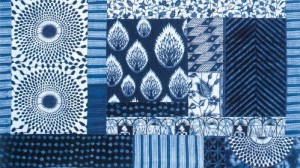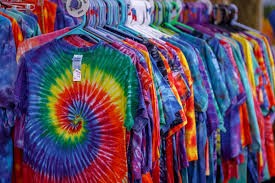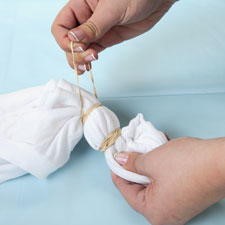Hi P-assengers! Back again with PIDAS. In this article, I want to talk about the little-known history of tie-dye and how to make tie-dye with easy-to-find materials. So please enjoy reading P-assengers!
The tie-dye trend returned to prominence during the Covid-19 era. Tie-dye is nothing new in fashion. Because tie-dye has been in use for over 600 years.
No one knows for sure where it came from. Some people say from Mesopotamia and India, some people say from Peru, and some people say from Africa they were brought to America.
Tie-Dye in Ancient Asia
The earliest written records about tie-dye come from China and Japan. The process was used during the Tang Dynasty in China and the Nara Period in Japan as far back as the 6th century. People used natural dyes from berries, leaves, roots and flowers to color clothing. These natural items were boiled, and the fabrics then soaked in the hot, dyed water to take on a new color. In the 6th century in India, people make a type of tie-dye named Bandhani.

The Rise of Tie-Dye in America
In the United States, tie-dye first rose to popularity in the period known as the Roaring ’20s.

The Hippie Era (symbol of resistance)
Tie-dye is a symbol of resistance from the hippie community against the prevailing culture at that time. This includes capitalism and the uniformity that occurred in society in the 1960s to 1970s. Tie-dye is also popular among hippies because it is considered unique and independent. Because when you made it, it will always be different
The 1980s and Beyond
Tie dye has made a comeback in every decade. However, it is now back in fame with more colors, types and styles. What made it famous again during this pandemic era.
Making Your Own Tie-dye (with food coloring)
Materials List:
- Tablecloth to protect your work surface (or do this outside!)
- White vinegar
- Large bowls or buckets
- White cotton T-shirt
- Rubber bands
- Gloves
- Old water bottle with a squeeze cap or condiment squeeze bottles
- Food coloring in colors of your choice
- Plastic wrap or zip lock bags
- Salt
Steps :
Step 1: Soak in Vinegar
In a large bowl, mix one part water with one part vinegar until there is enough liquid in the bowl to soak your fabric. Soak for one hour

Step 2: Choose Your Tie-Dye Design
Choose your tie dye design, be it spiral, heart, crumpled, or another method. After that, rubber band your item so it is ready to be dyed.

Step 3: Make Your Food Coloring Tie-Dye
Use an old water bottle with a squeeze cap to mix your tie-dye. In order to make dye with food coloring, fill the water bottle with a 1/2 cup of water and approximately 16 drops of food coloring. Use a different water bottle for each color of tie dye you make.
Step 4: Tie-Dye Your Design
Tie dye your garment as usual.
Step 5: Wrap Your Tie-Dye Design
Wrap your design in plastic wrap or enclose in a zip lock bag to let the dye set. Let sit for at least 8 hours, or overnight to ensure the food coloring dye sets.

Step 6: Set the Tie-Dye with Salt Water Mixture
You already took one step to prepare your project for tie-dyeing and that was soaking in vinegar and water before applying food coloring. Further set your tie dye by soaking your project in a salt water solution.
Mix 1/2 cup salt with enough cold water to cover the shirt until dissolved. Let your T-shirt soak for 15-30 minutes.
Step 7: Wash Your Newly Dyed Item
Take your fabric out of the bag and take the rubber bands off. Rinse your shirt in the sink with cold water until the water runs clear. Make sure you wash the shirt separately for the first three washes so the dye doesn’t stain your other clothes.
Note:
Food coloring is not a permanent dye like traditional tie-dye kits. Note that food coloring WILL fade over time, but the vinegar and salt soak steps should help the project last longer than it otherwise would have.
Wow, the articles are very useful right P-assengers? It’s also easy to try at home. So, that’s all from PIDAS. See you in the next article P-assengers!
This article was written by Salsabila Harmen.
